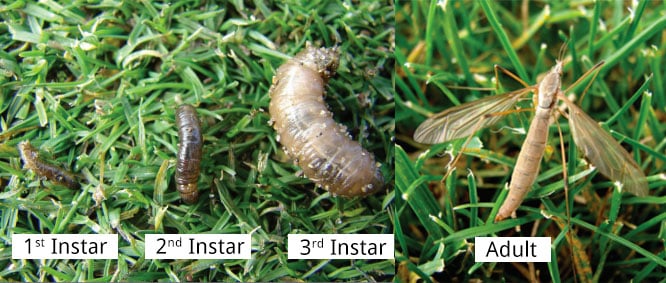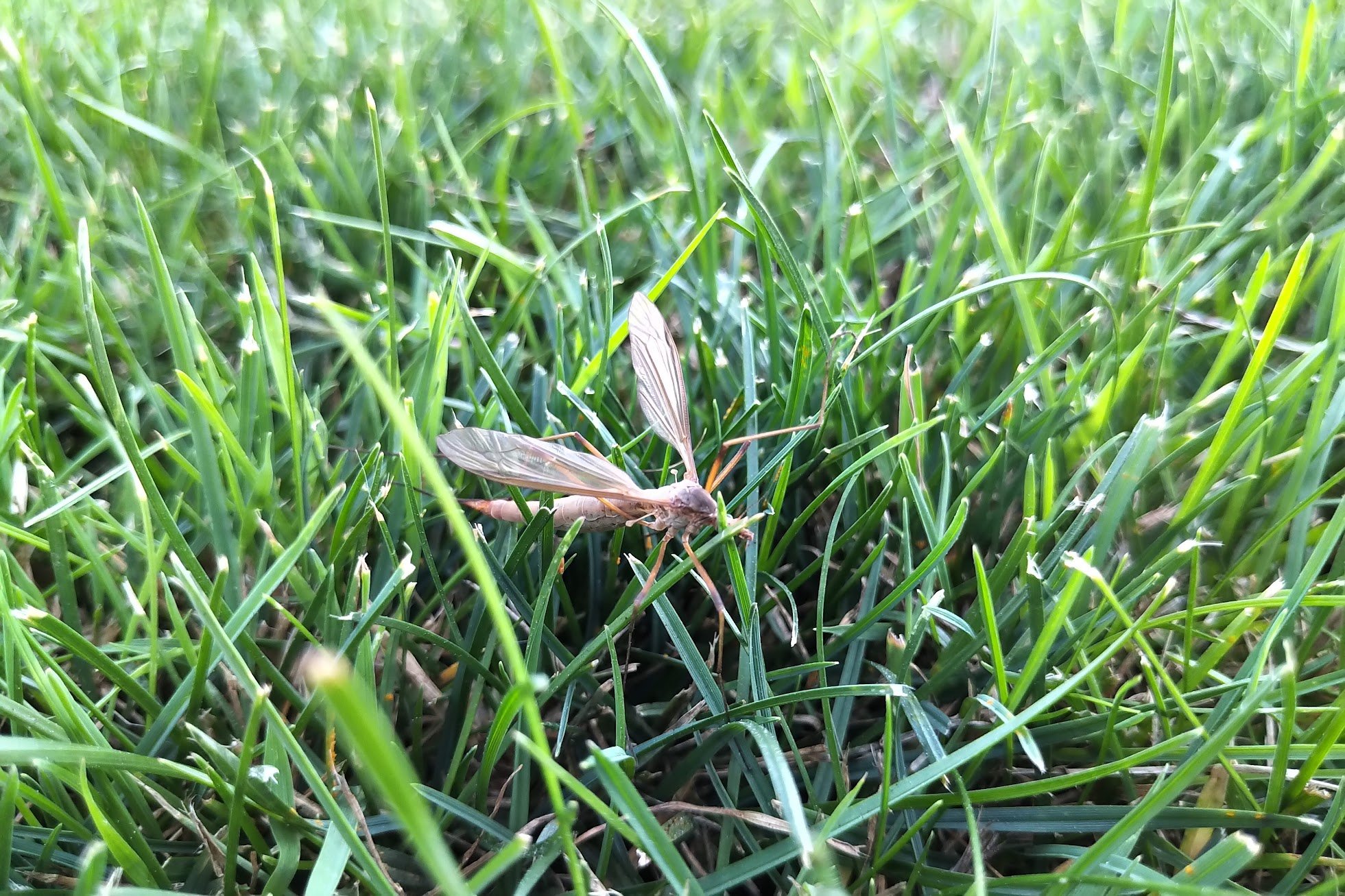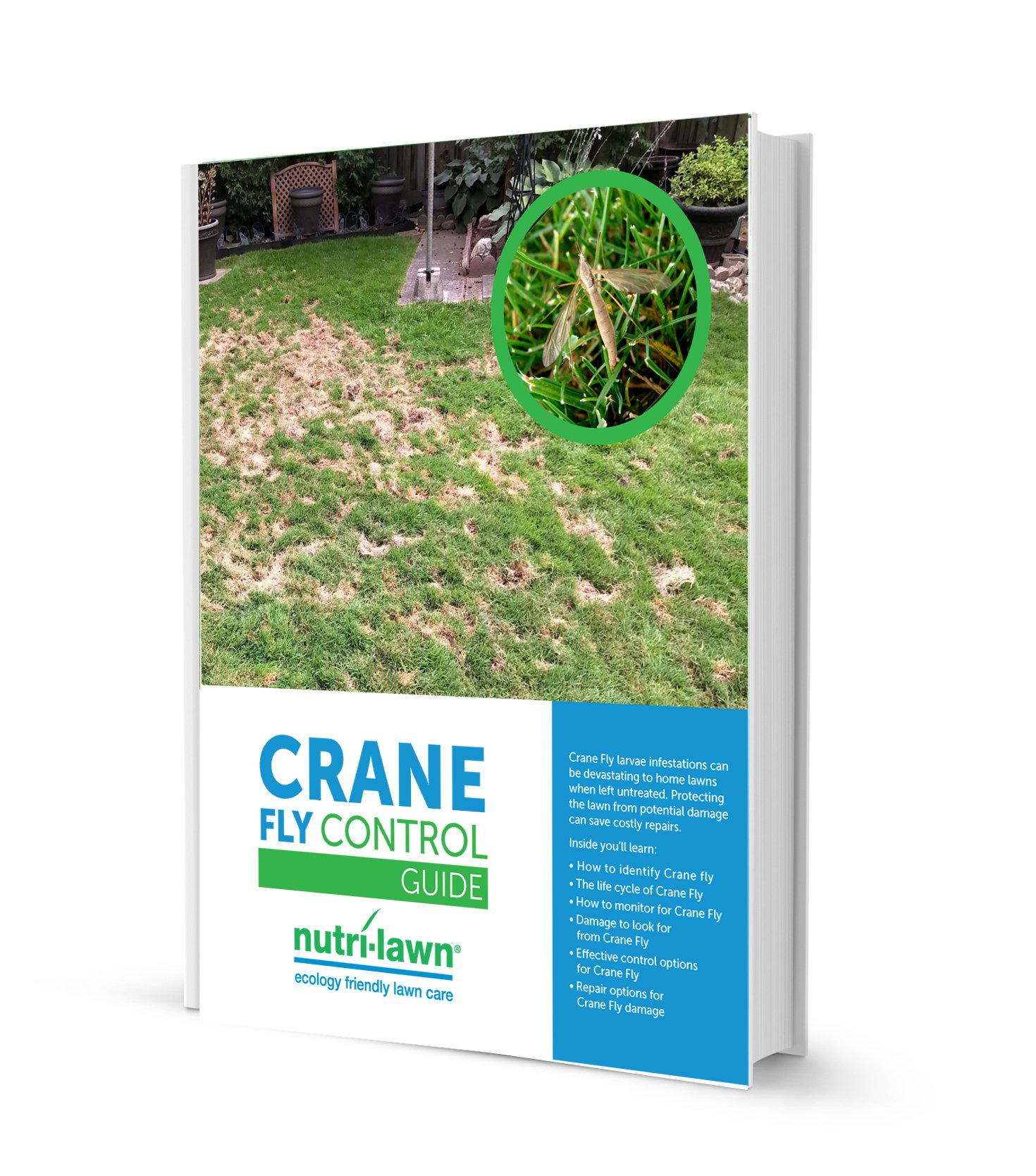Destructive lawn insects:
Crane Fly/Leather Jacket Control
Crane Fly/Leather Jacket Control
Crane Fly or Leather Jackets are common names referred to for a turf insect that looks like a large mosquito and for the appearance of a very tough-skinned larvae. Crane fly and Leather Jackets are considered a destructive turfgrass pest across many regions of Canada including British Columbia, Ontario, Nova Scotia, New Brunswick, and Newfoundland. This turf insect has 2 species found in Canada:
- Common crane fly (Tipula oleracea)
- European crane fly (Tipula paludosa)
The larvae life stage of crane flies life cycle is called a leather jacket. The leather jacket is light gray to grayish/greenish brown colour, with irregular black specks of various sizes. The head is small and the anal area has six tapering lobes, giving it a unique appearance that makes it easy to identify. The larvae feed on the roots and crowns below the surface and on the stems and blades on the turf surface. Damaged turf appears sparse, missing foliage, brown areas, and bare patches. Affected turf areas may also be subject to bird, racoon, and skunk damage. This is apparent from the digging, ripping and tearing the turf undergoes as they feed on the larvae in the soil. Heavily infested areas may harbour well over 50 larvae per sq ft.

Request A Quote
Fill in the form below and we'll have a customer representative contact you!
European crane fly (ECF) have one generation per year. Larvae hatch in late summer (Aug-Sept) and feed sparingly during the winter in mild coastal regions before aggressive feeding beginnings in early spring. In colder climates, the larvae stop feeding, overwinter and begin feeding in the spring when the soil thaws. Larvae typically stop feeding in late May before moving downward in the soil. They remain there as they pupate and emerge as Crane Fly beginning in August through September. Adult crane fly mate and lay eggs within 24 hours of emergence. Eggs are laid just under the surface of the soil. These eggs hatch in approximately 2 weeks and leather jacket larvae begin feeding.
Common crane fly (CCF) have 2 generations per year. Overwintering larvae from the previous fall pupate in February-March and emerge as adults in late March-April. Mating takes place and eggs are laid. The second generation of larvae mature from April through September and adults emerge for the second generation at the same time as the one generation EFC from August through September. Estimates suggest approximately 90-95% of crane fly species in BC are that of European crane fly.
Adult crane flies look like giant mosquitoes and typically congregate on sides of buildings and on the turf surface. The body is slender, brownish in colour and about ¾ -1 inch in length with one pair of wings, and very long legs. Adults emerge shortly after sunset and mating occurs on the foliage of the turfgrass. The female lays eggs (200-500) just under the surface of the soil. These eggs hatch in approximately 2 weeks into leather jacket larvae and begin feeding. Eggs require moisture to remain viable and for hatching to occur. Periods of dry conditions during egg laying often reduce survival of eggs and larvae. Wet fall conditions and mild winters can encourage outbreaks in leather jacket populations the following spring especially in coastal regions where these conditions are well suited for crane flies. In regions of the country that experience traditional cold winter weather, leather jacket populations are often subject to winter kill which reduce infestations naturally. Monitoring insect populations during the following spring is recommended before a control decision is necessary.
Beneficial nematodes can be used as a means of managing the crane fly larvae. For optimal control results, nematodes applied shortly after the eggs have hatched and when the larvae are small and actively feeding help eliminate infestations and keep populations within acceptable threshold levels.
Traditional pest control products can also be applied to effectively eliminate leather jacket infestations.
Contact your local Nutri-Lawn to learn more about our insect control service and what products are available in your local area.

What is a Leather Jacket?





